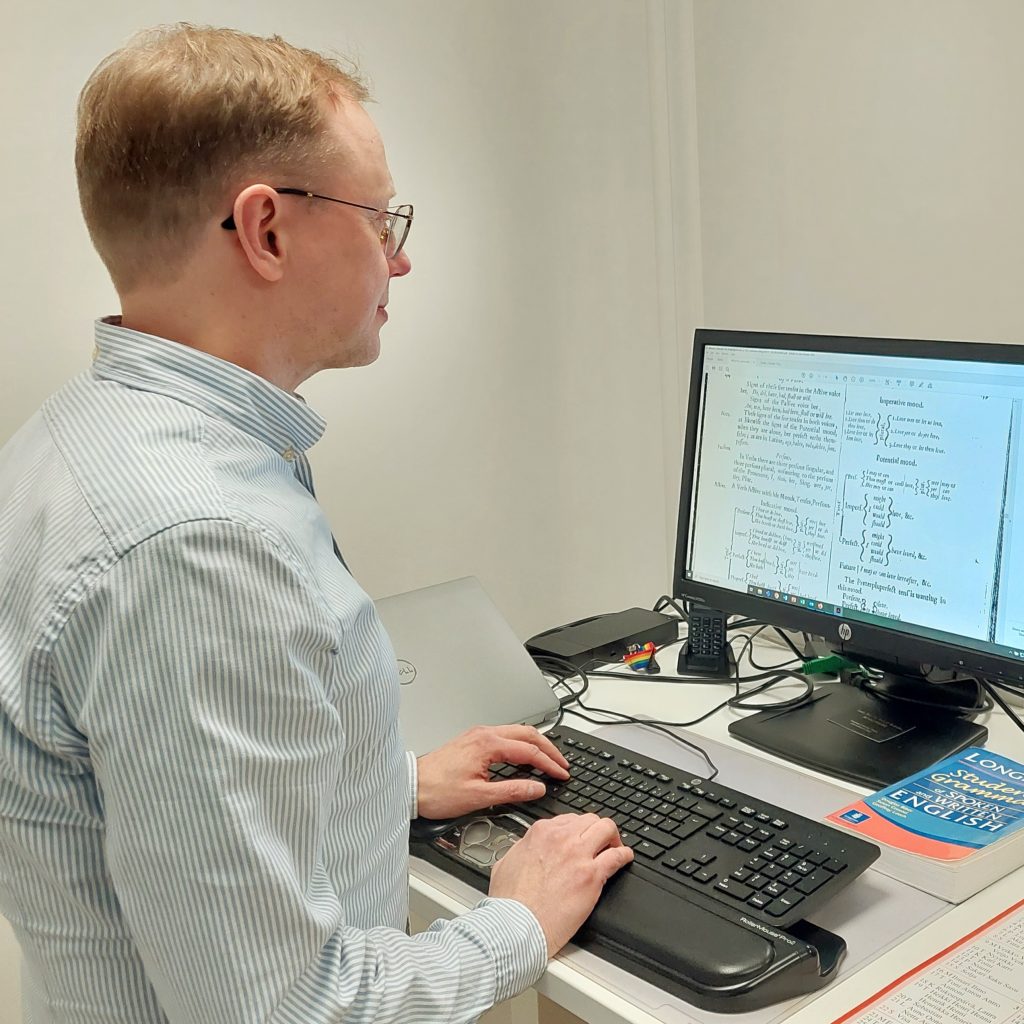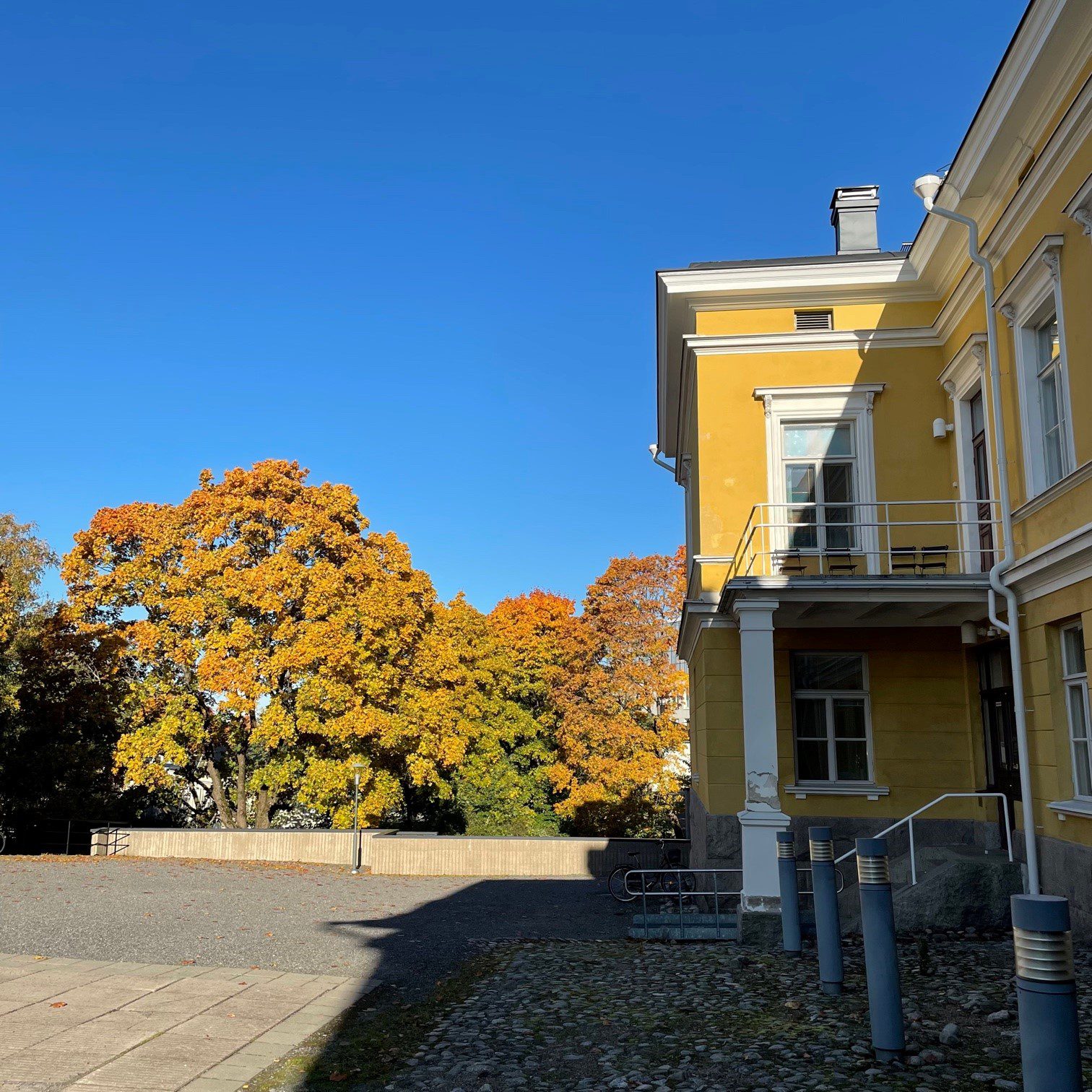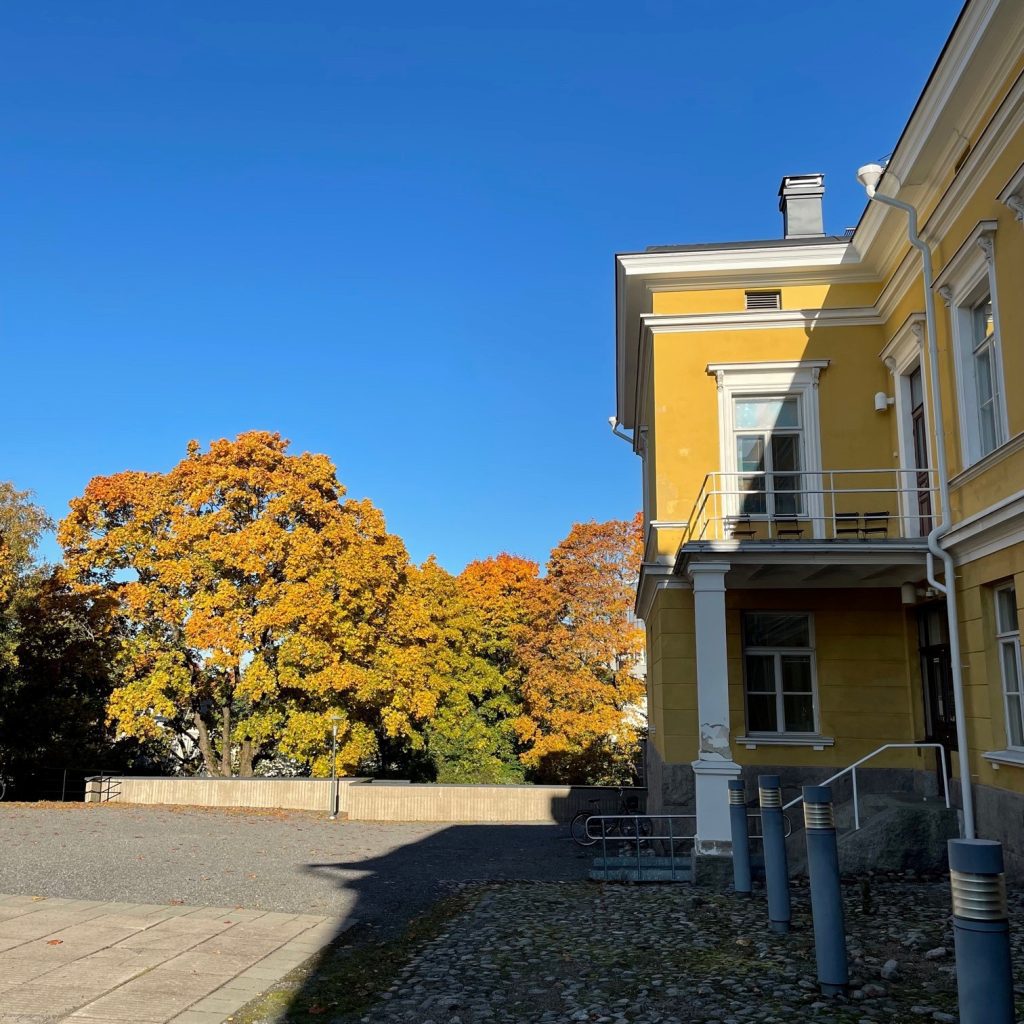Dr Janne Skaffari is a senior lecturer at the Department of English, University of Turku. He joined the EModGraL team in August 2022. In this post, Janne tells us more about how the topic of graphic literacies features in his research and teaching.

How does your previous work connect to graphic literacies?
I think it was when the English Department’s Pragmatics on the Page team started working on the interplay of the linguistic with the visual that I first saw how relevant and exciting the visual – and also graphic – dimension was. We organised a symposium and edited a book together, and I keep returning to all things visual when I research, for instance, written codeswitching in medieval manuscripts.
What is your role and your main area of research in EModGraL?
I am the ‘grammar guy’, so I work on 17th-century grammar books and their graphic devices. Describing grammatical structures often invites graphic support.
Does the theme of graphic literacies feature in your teaching?
I see and utilise figures and tables all the time when teaching descriptive grammar. The model we use in the second-year grammar course is corpus-based, so frequencies and register differences are often presented graphically in the textbook, and it often makes sense to draw the students’ attention to the figures and tables, not just to the descriptions and analyses written in prose. As I also supervise theses, I often recommend explicating classifications and frequencies by graphic means. Quantitative results are often much harder to follow it they appear in sentences rather than in tables.
Why is studying early graphic literacies important?
We often think that the visual aids and graphic presentations we see around us are a new thing, and if not a brand-new thing, at least not something that goes back more than a couple of generations. However, tables and other graphic elements were used centuries ago, in quite early printed books but also before the printing press, when texts were manuscript rather than printed. Although things change all the time, there is a lot that does not disappear, even if the technology changes.
Has the project given you new research ideas regarding graphic devices or graphic literacies?
There is a lot of visual information in the early modern grammar books that is not explained; the readers were apparently expected to understand how tabular layout, curly brackets and the information in and around them should be read and understood. I am curious about these literacy skills. I would also like to trace diachronically the particulars of how specific grammar topics, such as the system of personal pronouns, have been presented in books over centuries, all the way up to the present. This is an area where I can bring what I teach together with my research interests.
Janne Skaffari & Aino Liira | Twitter: @jansfi






